News Headlines
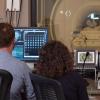 Could a computer, at a glance, tell the difference between a joyful image and a depressing one?
Could a computer, at a glance, tell the difference between a joyful image and a depressing one?
Could it distinguish, in a few milliseconds, a romantic comedy from a horror film?
Yes, and so can your brain, according to research published this week by CU Boulder neuroscientists.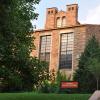 The CU Museum of Natural History has again achieved accreditation by the American Alliance of Museums, the highest national recognition afforded the nation’s museums. Accreditation signifies excellence to the museum community, to governments, funders, outside agencies, and to the museum-going public.
The CU Museum of Natural History has again achieved accreditation by the American Alliance of Museums, the highest national recognition afforded the nation’s museums. Accreditation signifies excellence to the museum community, to governments, funders, outside agencies, and to the museum-going public. CU Boulder will host the first field hearing of a special congressional committee on climate change on Thursday, Aug. 1. Rep. Joe Neguse, D-Colo., whose district includes Boulder, made the announcement this week.
CU Boulder will host the first field hearing of a special congressional committee on climate change on Thursday, Aug. 1. Rep. Joe Neguse, D-Colo., whose district includes Boulder, made the announcement this week.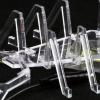 Every advancement in the field of soft robotics brings researchers one step closer to developing wearable, surgical and collaborative robots that could safely and effectively help humans. This is why researchers in the Department of Mechanical Engineering at the University of Colorado Boulder have released a toolkit to show scientists, hobbyists and entrepreneurs how to create their own artificial muscles.
Every advancement in the field of soft robotics brings researchers one step closer to developing wearable, surgical and collaborative robots that could safely and effectively help humans. This is why researchers in the Department of Mechanical Engineering at the University of Colorado Boulder have released a toolkit to show scientists, hobbyists and entrepreneurs how to create their own artificial muscles.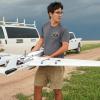 Project TORUS is a two-year partnership between CU Boulder, the University of Nebraska-Lincoln (which is leading the work), Texas Tech University, the University of Oklahoma and the National Severe Storms Laboratory.
Project TORUS is a two-year partnership between CU Boulder, the University of Nebraska-Lincoln (which is leading the work), Texas Tech University, the University of Oklahoma and the National Severe Storms Laboratory. A new drug therapy for cancer treatment, spun out of research performed in a CU Boulder biochemistry lab, may provide better results for patients with solid cancers and hematologic cancers, such as leukemia and lymphoma.
A new drug therapy for cancer treatment, spun out of research performed in a CU Boulder biochemistry lab, may provide better results for patients with solid cancers and hematologic cancers, such as leukemia and lymphoma.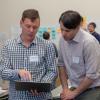 The inaugural Research-to-Market (R2M) program—hosted by Venture Partners at CU Boulder—guided researchers-turned-startup founders through the iterative process of finding a product-market fit and refining a value proposition for their respective technologies.
The inaugural Research-to-Market (R2M) program—hosted by Venture Partners at CU Boulder—guided researchers-turned-startup founders through the iterative process of finding a product-market fit and refining a value proposition for their respective technologies. “From a neurobiological perspective, what do you need to form a bond, maintain a bond and overcome a loss?” asks Zoe Donaldson, a CU Boulder assistant professor of behavioral neuroscience and one of the 2018 RIO Faculty Fellows.
“From a neurobiological perspective, what do you need to form a bond, maintain a bond and overcome a loss?” asks Zoe Donaldson, a CU Boulder assistant professor of behavioral neuroscience and one of the 2018 RIO Faculty Fellows. New research from a CU Boulder physicist might break open the mathematical puzzle that has stalled string theory research for decades. A University of Colorado Boulder physicist is one step closer to solving a string theory puzzle 20 years in the making.
New research from a CU Boulder physicist might break open the mathematical puzzle that has stalled string theory research for decades. A University of Colorado Boulder physicist is one step closer to solving a string theory puzzle 20 years in the making. The Lab Venture Challenge (LVC), hosted annually by Venture Partners at CU Boulder awards grants to campus researchers whose technologies demonstrate high commercial potential.
The Lab Venture Challenge (LVC), hosted annually by Venture Partners at CU Boulder awards grants to campus researchers whose technologies demonstrate high commercial potential.

